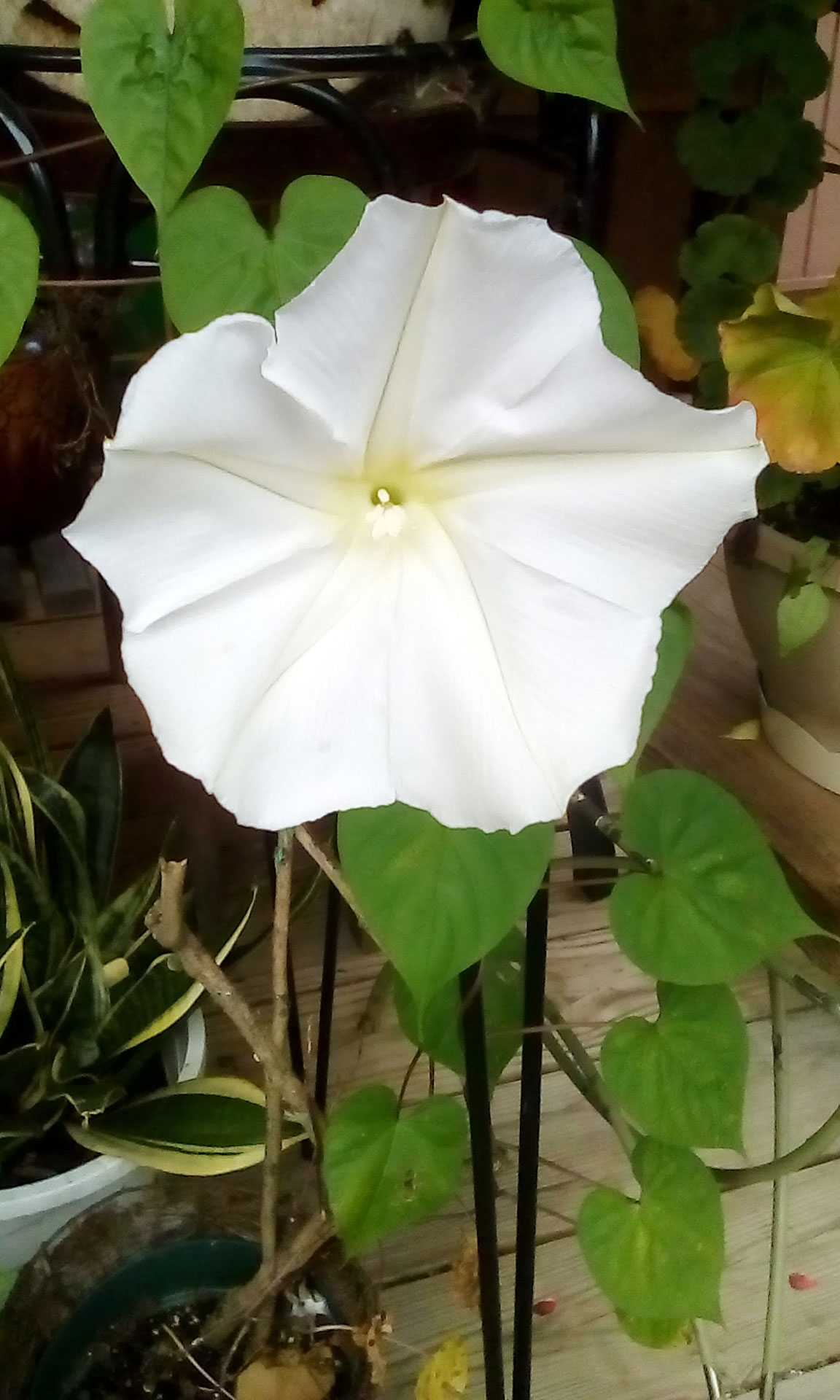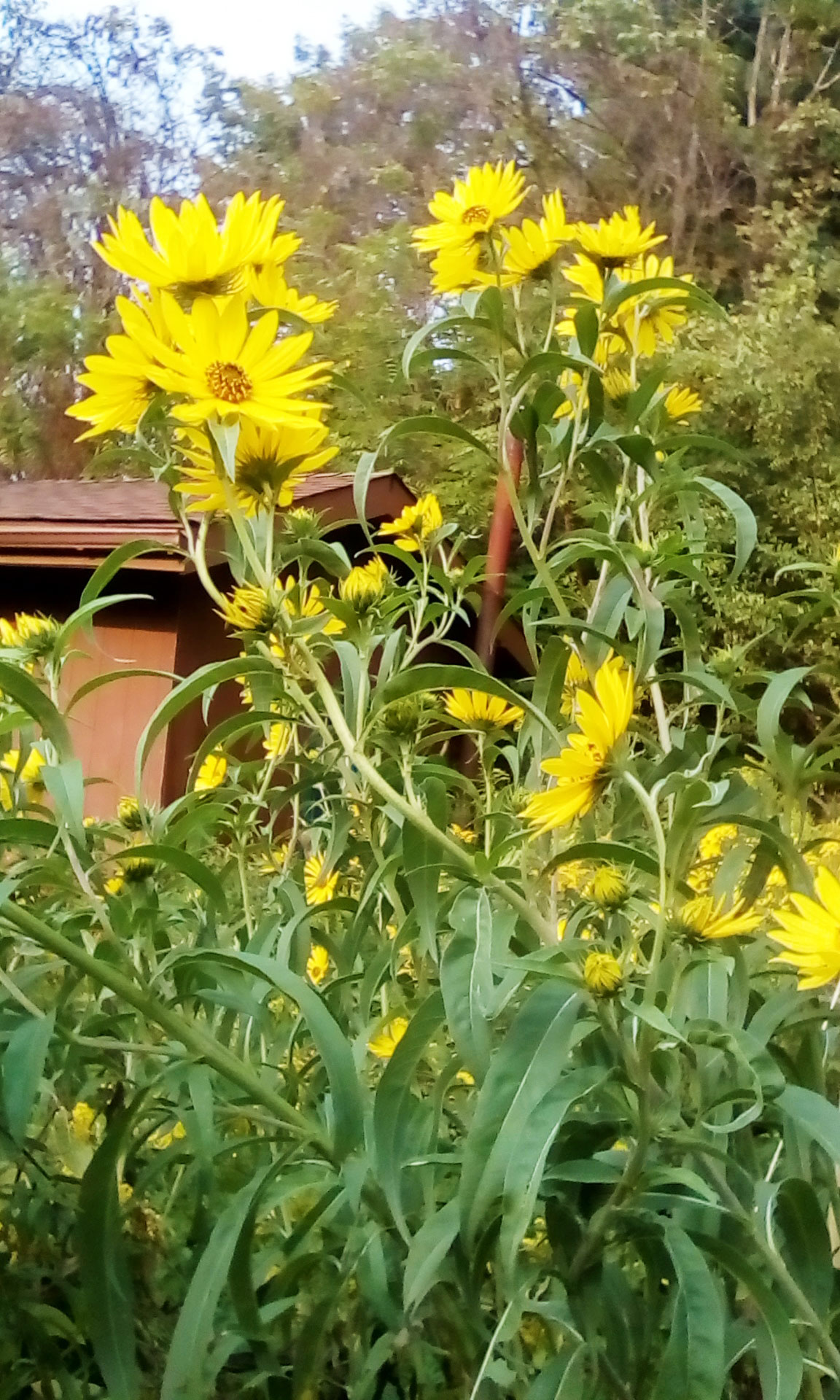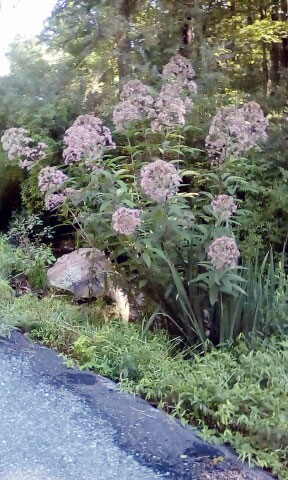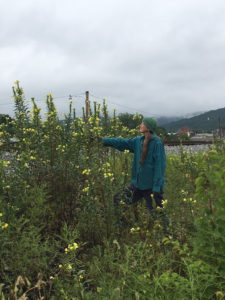A Thing of Beauty
by Christine Maccabee

If ever there were proof that nothing lasts forever, the moonflower’s flower is it. Most of the great civilizations throughout world history were transitory, as are our little lives. Of course, most civilizations endured far longer than my moonflower flowers, though their seeds may come from ancient stock. As well, if you are reading this you are likely still blooming!
Throughout this difficult pandemic, nature lovers like me have been hard at work growing and planting and preserving things of value, such as food, and yes, things of beauty. Yesterday, I went to the dentist, and I was pleasantly surprised to see a wonderfully colorful display of zinnia flowers in a vase, obviously well-cultivated and cared for by the person who grew them.

Such love of nature and beauty is not unusual here in Northern Frederick County. I see evidence of such caring in many yards throughout Thurmont. Even some larger areas are abloom right now with woodland sunflowers (see photo), goldenrods, and tiny wild aster flowers. Certainly, we do not want to lose sight of what is important for the continuance of wholesome, healthy life on our planet, and such late blooming plants are not only providing beauty but also the nectar our pollinators need to survive a cold fall and winter.
It is mid-September as of this writing, and here in my mountain home I await with great expectation the opening of two more moonflower buds, which are growing in pots on my deck and under an arbor. I bought my seeds through a catalogue and always thought they were annuals. However, I recently learned that it is a perennial tropical plant and can be cultivated, with great patience and plenty of water, in more northern climates. Surprisingly, it potentially can even winter over if planted in the ground and not in pots, even spreading by seed, even as far north as Maryland, though I imagine very rarely. Somehow, I don’t think it would survive up here in the Catoctins where temperatures are at least five degrees or lower than in Thurmont, but I might try it next year.
Then there is the wonderful woodland sunflower, which can be seen in spots behind the guard rail along Rt. 550 north. Many years ago, I was given some of their tiny seeds, which I planted in a wild area just off my deck. Their small golden heads are a joy to behold amidst all the golden rods. These flowers are summers’ final display of its transitory glory. Of course, bees love them, too, as well as any monarchs drifting in for a quick snack on their long migration south.
There are many contentious things we could discuss and argue about these days, especially now before elections, but I pray we do not lose sight of the things we all have in common, such as the need for clean water and air, protecting and planting trees, wild areas to feed bugs and birds, our family and friends, and of course, enjoying things of beauty. Politics aside, for me, all these things are the most important elements in my daily life, and for ongoing life and joy on Earth.
So, I choose to focus on the beautiful things, no matter how fleeting. Enjoy your precious days ahead, no matter the storms, taking the good with the bad, the beautiful with the terrible…and remember…nothing lasts forever.




